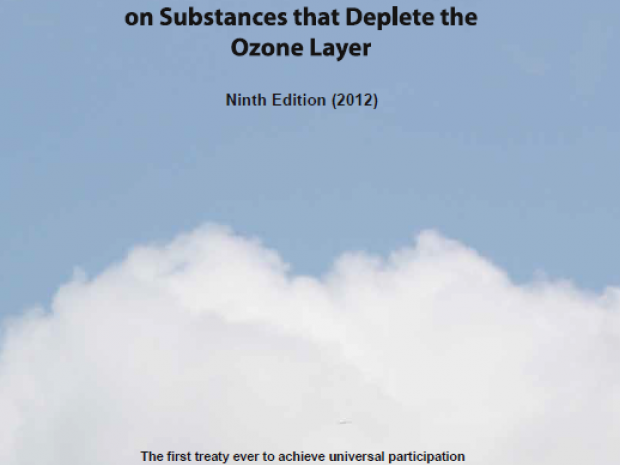The Montreal Protocol on Substances that Deplete the Ozone Layer (Montreal - adjusted 2012)

The Montreal Protocol on Substances that Deplete the Ozone Layer was designed to reduce the production and consumption of ozone depleting substances in order to reduce their abundance in the atmosphere, and thereby protect the earth’s fragile ozone Layer. The original Montreal Protocol was agreed on 16 September 1987 and entered into force on 1 January 1989.
The Montreal Protocol includes a unique adjustment provision that enables the Parties to the Protocol to respond quickly to new scientific information and agree to accelerate the reductions required on chemicals already covered by the Protocol. These adjustments are then automatically applicable to all countries that ratified the Protocol. Since its initial adoption, the Montreal Protocol has been adjusted six times. Specifically, the Second, Fourth, Seventh, Ninth, Eleventh and Nineteenth Meetings of the Parties to the Montreal Protocol adopted, in accordance with the procedure laid down in paragraph 9 of Article 2 of the Montreal Protocol, certain adjustments and reductions of production and consumption of the controlled substances listed in the Annexes of the Protocol. These adjustments entered into force, for all the Parties, on 7 March 1991, 23 September 1993, 5 August 1996, 4 June 1998, 28 July 2000 and 14 May 2008, respectively.
In addition to adjustments and amendments to the Montreal Protocol, the Parties to the Protocol meet annually and take a variety of decisions aimed at enabling effective implementation of this important legal instrument. Through the 22nd Meeting of the Parties to the Montreal Protocol, the Parties have taken over 720 decisions. The decisions adopted by the Parties are included in the reports of the Meetings of the Parties and, along with other documents considered during the meetings, can be accessed under the meetings' links.
Here is the Montreal Protocol as ajusted and amended in 2012.
This presentation was taken from the Ozone Secretary of the UNEP Website
You can find more information on: http://ozone.unep.org
Log in with your EU Login account to post or comment on the platform.